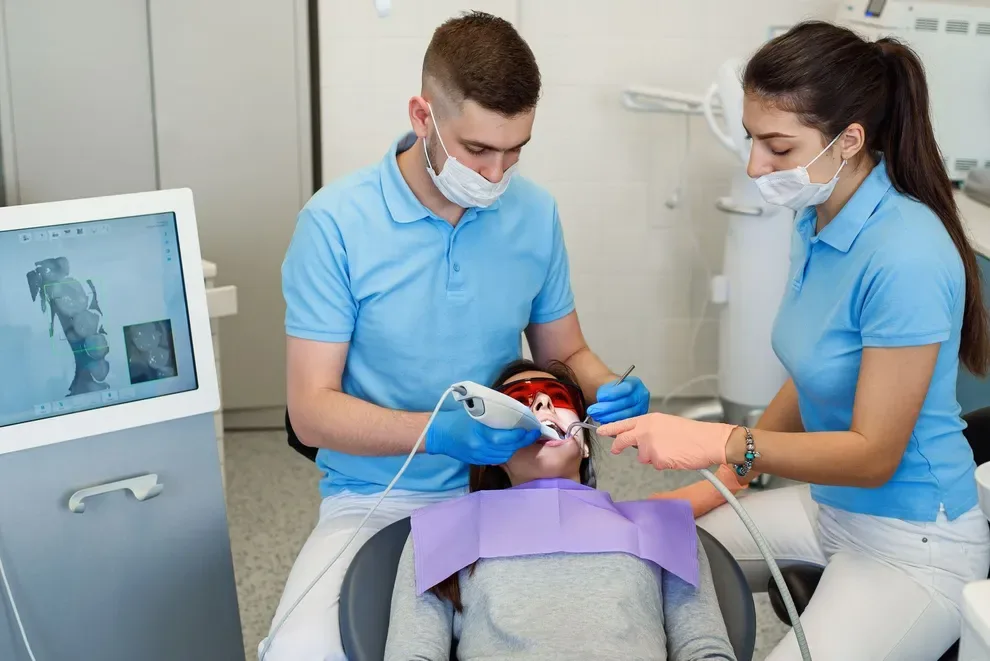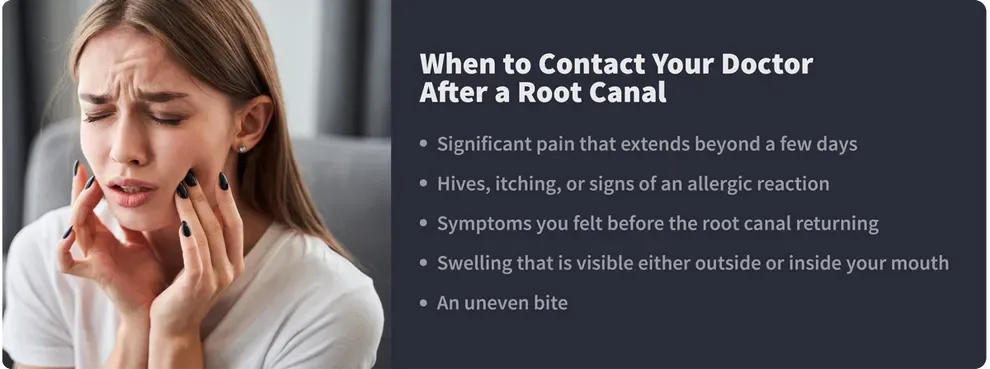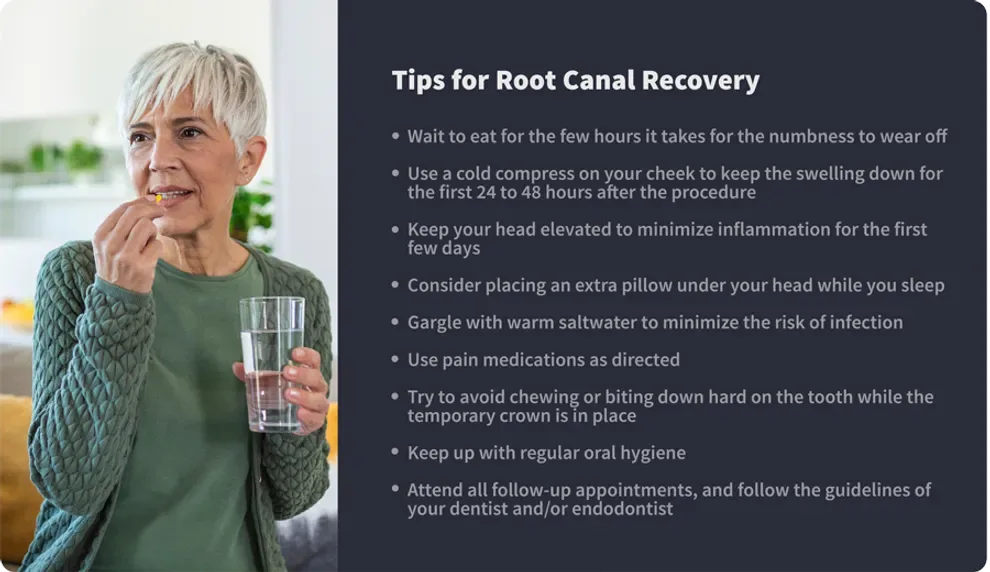Root Canal Pain: Recovery Timeline & Tips

Table of Contents
- Root Canal Pain
- Cause for Concern
- Timeline for Recovery
- Tips for Recovery
- References
It is normal to feel sore and experience some discomfort for a few days after a root canal. Generally, this pain will ease quickly.
Full healing should occur within about a week of the procedure. It is important to follow your dentist’s instructions after a root canal to aid your recovery.
When tooth decay reaches the inside of a tooth (the pulp), the infection will need to be cleared out with a root canal. Typically, the root canal is designed to relieve pain that you are feeling due to an infection in your tooth.
Root Canal Pain
When bacteria build up on your tooth and the infection spreads to inside and under the tooth, you can experience extreme tooth pain and sensitivity. It can hurt to chew and talk, and your gums may be swollen and tender.
The goal of a root canal is to clean out the infection from the pulp of your tooth, and often the root as well, and to then seal it off to relieve your tooth pain and save the tooth.
A root canal is a common procedure that can help to minimize tooth pain down the line. It has a 95 percent success rate.
Initially, you will feel some mild to moderate pain from a root canal, which can often be managed with over-the-counter (OTC) pain medications. Your tooth may be sore and sensitive. You may also have some soreness in your jaw after the procedure since it was held open for a long period of time.
Your dentist may prescribe you stronger pain medications to use for a few days. Be sure to use the pain relievers exactly as directed. The pain and tooth sensitivity should dissipate in a few days.
Cause for Concern

In some cases, root canal pain does not decrease your toothache. If any of the following occur, contact the dentist or endodontist who did the procedure:
Significant pain that extends beyond a few days
Hives, itching, or signs of an allergic reaction
Symptoms you felt before the root canal returning
Swelling that is visible either outside or inside your mouth
An uneven bite
Complications from a root canal are rare. Generally, the pain and extra sensitivity you feel directly after the procedure go away after about a week.
Timeline for Recovery
During a root canal, your dentist or endodontist will use numbing medication before performing the procedure. This will wear off two to four hours after the root canal. At that point, you may experience some mild to moderate pain in the tooth and jaw as well as tooth sensitivity.
Pain from a root canal is generally similar to that of a typical dental procedure, such as having a cavity filled. It usually does not last more than a few days.
Within two to three days, the pain and sensitivity will decrease as the area heals. After about a week, you will need to go back in for a follow-up appointment. At this time, you’ll usually have a crown placed on the tooth.
If you experience pain or a return of prior symptoms after a few days to a week, contact your dental care team. This is uncommon and could be a sign that something is wrong.
Tips for Recovery

You can assist your recovery and speed up the timeline by following the post-procedure plan that your dentist or endodontist gives you. Typically, this means practicing good oral hygiene and attending your follow-up appointments.
Here are some tips to support recovery from a root canal:
Wait to eat for the few hours it takes for the numbness to wear off. This ensures you don’t bite your tongue or the inside of your cheek when you are unable to feel sensations in the area.
Use a cold compress on your cheek to keep the swelling down for the first 24 to 48 hours after the procedure.
Keep your head elevated to minimize inflammation for the first few days. Consider placing an extra pillow under your head while you sleep.
Gargle with warm saltwater to minimize the risk of infection after a root canal.
Use pain medications as directed. Understand that prescription painkillers may have side effects. It’s usually a good idea to avoid driving or performing certain activities while taking them.
Try to avoid chewing or biting down hard on the tooth while the temporary crown is in place or before the full restoration of the tooth is complete. This lowers the chances of damaging the treated tooth.
Keep up with regular oral hygiene. Brush and floss your teeth as you normally would, taking special care around the treated tooth. Use a soft-bristled toothbrush and a soft touch.
Attend all follow-up appointments, and follow the guidelines of your dentist and/or endodontist.
To best heal after a root canal, communicate with your dental team if anything feels off, and follow all follow-up care instructions.
